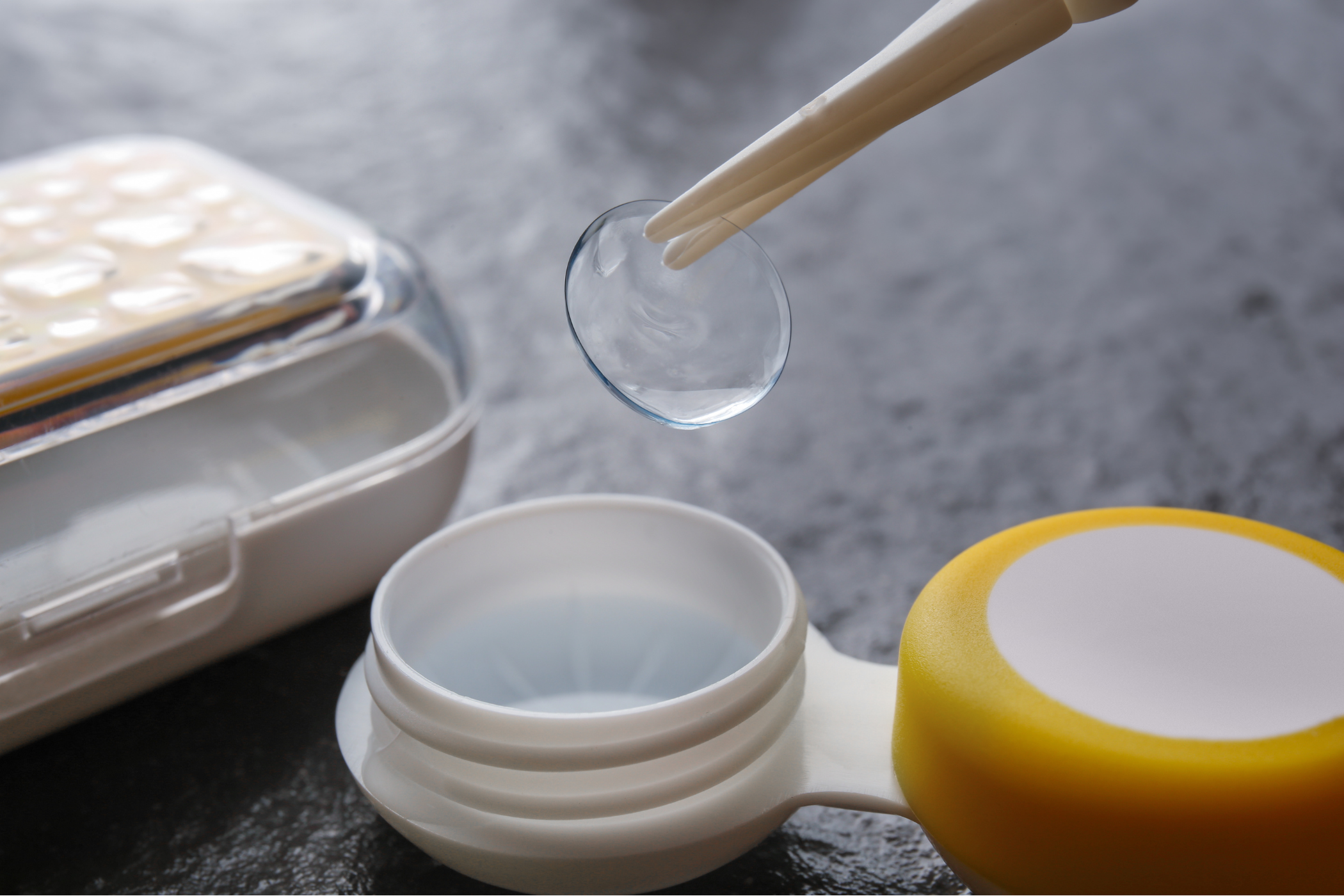
More and more people are opting to wear contact lenses as a practical alternative to glasses. Their increased popularity is easy to understand – they look more natural, can give you a wider field of vision, and many people find them more convenient. But while they can be a convenient alternative to traditional glasses, adjusting to them may take some time and patience.
What to expect when you start wearing contacts
An adjustment period is very normal when you first get contact lenses. You may experience some blurry vision, discomfort (also known as “lens awareness”), or slight eye strain for up to two weeks after your first time wearing your lenses. Don’t give up though, it’ll be worth it once you’re used to them.
Normal side effects of contact lens wear
You may initially have some awareness of the lens in your eye as you adjust to your new contact lenses. Thankfully, there are ways to alleviate these issues during the adjustment period.

Blurry vision
Dry, tired eyes can cause blurry vision. But so can improper cleaning and storage of your reusable contact lenses, or an improper fit. Make sure you’re always cleaning your lenses after every wear with a cleaning solution made for your type of lenses and approved by your optometrist. Additionally, make sure you rinse your lenses in the solution before putting them in and after removing them, and ensure you’re storing them in the correct solution as well. If the blurry vision persists, your prescription may need adjusting – your optometrist can review this for you.
Discomfort and irritation
You may experience some discomfort when you’re still getting used to how lenses feel when they’re in your eyes. Don’t rub your eyes or try to poke at the lenses with your fingers. Instead, blink as normally as possible and use eye drops if your eyes or lenses feel dry. If they continue to be uncomfortable, remove the lenses and speak to your optician.
Eye strain
Spending a lot of time looking at computer screens can cause eye fatigue at the best of times but when you’re getting used to contact lenses it can make it feel worse. To help ease eye strain, limit wearing your contacts to just a few hours a day until you adjust. If you also notice that your eyes are dry or irritated, use eye drops or switch back to your glasses to let your eyes rest.
How long does it take to get used to contact lenses?
Patience is key during the adjustment period. It usually takes around 10-14 days to get used to new contact lenses. If it’s taking longer, get in touch with your optometrist as there may be a fit issue or you’re not wearing them correctly which is slowing down your adjustment.
Contact lens issues to watch out for
Prolonged irritation and infection are less common side effects of wearing contact lenses that may indicate improper use or len-related issues. It’s important to be vigilant so that you don’t damage your eyes.
Risk of infection
When wearing contact lenses, there is an increased risk of eye infections. To make sure you’re not unnecessarily introducing bacteria into your eyes, always wash your hands with soap and water before handling your lenses.

You may want to avoid wearing makeup for the first couple of weeks but if you do continue to wear it, apply your makeup after you put your lenses in, and make sure you’re removing your lenses before your makeup. Cleanse your reusable lenses properly between wears and use the correct storage solution to keep your lenses clean.
Tips for a smooth transition to contact lenses
Gradually increase length of wear – don’t expect to be able to wear lenses for a full day right away. You will probably find that slowly increasing the amount of time you wear them for over a few weeks will be most comfortable.
Proper lens care and hygiene – make sure you are caring for your lenses correctly and always have clean hands before touching your lenses or your eyes. This minimises the risk of infection and introducing bacteria to your eye.
Using eye drops and lubricants – if your eyes feel dry or irritated, use eye drops to keep your eyes lubricated. Leaving dry eyes untreated can cause permanent eye damage so it’s important to take it seriously. Speak to your optometrist if you are experiencing dry eye syndrome. They may suggest a different type of contact lens or regime.
Find the perfect lenses – The most important step in the journey of comfortably wearing contact lenses is finding the right lenses for your eyes. Your optometrist will measure the size of your pupils, the curvature of your eye, and your prescription and recommend the best type of contact lenses to suit you.
When to consult your eye care professional
Stress the importance of communication with eye care professionals, emphasising that they are key resources for successful contact lens wear.
It’s vital to communicate with your optometrist and optician team if you have any issues with your contact lenses. They are a key resource for successful contact lens wear and can ensure you have the best fit, prescription, and can help you find the perfect lenses for your specific needs such as daily wear or specific conditions like astigmatism.
If you want to give contact lenses a try, book your contact lens consultation today.








